What are wetlands?
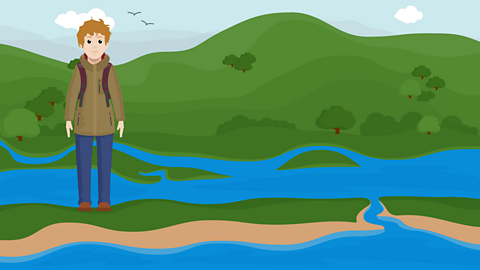
Wetlands are areas of the land that are covered by water for most of the time. They can form naturally or be man-made.

Watch: Explore the wetlands of the UK
Learn about the different bogs, fens and wetlands that are in and around the UK.
If I told you I was visiting a bog, you might be wondering why I look so happy, but just look at it!
I'm Jude and today I'm at Flanders Moss in Scotland to find out why wetlands are so important.
A wetland is just what is sounds like - an area of land that is very wet. There might be water on the surface where you can see it, or the soil itself is often completely soaked in water like a gigantic sponge.
The plants that grow here have changed and adapted over millions of years to cope with living in so much water, like this stuff which is called sphagnum moss. When the moss dies, it begins to rot and sinks into the water to form a layer.
More moss grows, dies, sinks and makes another layer on top and so on and so on. The layers at the bottom get squashed and compacted to make a thick brown soil called peat.
About 1mm of peat forms every year and here at Flanders Moss, the peat is 7m deep in some places, that's taken over 8,000 years. When it's dried out, peat burns really well, so it's been used to heat peoples homes for many years.
In the UK, we have lost nine-tenths of our wetlands in the past 100 years and that can be a problem. The reason is because not only are wetlands home to all kinds of rare plants, birds and animals, they also help to tackle climate change.
They soak and store up a lot of water which stops nearby towns from flooding. They also reduce carbon dioxide levels in the air, which is good for the environment.
Plants take in carbon dioxide during the day and store it as carbon, but then they lose some of it during the night and also when they're burned for fuel and eaten.
But peat locks the carbon away in the mud for hundreds or thousands of years so we really need to look after the wetlands we have left.
This is Fiskerton Fen in Lincolnshire. A fen is another kind of wetland, but unlike a bog, which gets its water from rainfall, a fen's water seeps through from the rock underground.
In 2004, this place was a clay pit where huge diggers were removing the earth for building work, but it has been restored and now is this amazing wetland, where rare birds and plants can live.
Wetlands are so important for the environment and they're great places to visit as well. Find out where your nearest wetland centre is and don't forget to bring your boots or wellies.
Is that a bird of prey?
How do wetlands form?
Wetlands are areas that are filled or soaked with either freshwater, saltwater or brackishSlightly salty water, a mixture of the two. They are neither dry land or underwater; they are somewhere in between.
Wetlands form when water cannot drain away from the area, so it builds up and floods it.
The water in wetlands can come from:
sea
rivers and lakes when they flood
estuaries, where river water mixes with water from the sea
rain
Wetland types
The amount of water in the soil, and the type of water determine which plants and animals can be found in wetlands.
There are different types of wetlands. The four main ones in the UK are:

Marshes
In marshes, the water covers the area for long periods of time.
Marshes form near rivers and along seacoasts and can have either fresh or salty water.
Salt marshes can be found along coasts particularly around estuaries.
There are no trees in marshes. They are home to a variety of birds, such as herons, and other animals, including otters and newts.



Swamps
Both swamps and marshes have soil rich in minerals, but swamps usually have trees. Like marshes, swamps can have either salty or fresh water. Fresh water swamps can be found in the Scottish uplands and saltwater swamps form near coastlines. Swamps are rich in wildlife, and are home to animals including fish, birds and frogs.

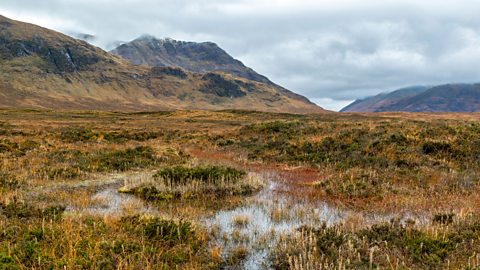
Bogs
Bogs are more common in colder areas, and they often form in places where glaciers once eroded the ground and left behind a freshwater lake.
The lake fills up with roots of dead plants, leaves and stems. As it becomes shallower, moss starts extending into the lake from its edges and soon, the whole lake is filled with plants.
The oldest, rotten plants at the bottom of the bog form a thick, spongy mat called peat, which can be used as fuel. Only certain types of plants can grow in bogs, because the soil is not very rich in nutrients so many plants must find nutrients from sources other than the soil. Mosses and heaths are common here.


Fens
Fens are in the lowlands of the UK that are always full of groundwater. Because they are always water-logged, plant material can't rot away and it builds up to form peat. Peat doesn't have many nutrients and so only certain plants - such as mosses and sedges can grow in it.
Bog and fens are both waterlogged areas of land - bogs by rainfall and fens by groundwater.
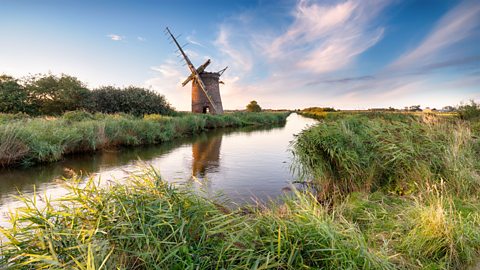
Importance
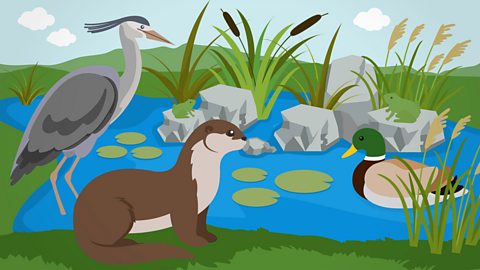
Wetlands are incredibly important for the planet and environment:
They are home to a wide variety of animals and plants.
They absorb water during heavy rain. This can help to protect people’s homes from flooding.
They protect coasts from erosion caused by storms, wave action and rising sea levels. They help keep the shoreline stable.
They are a popular place for recreational activities such as canoeing, hunting and birdwatching.
They act as a water filter: the plants in the wetlands can filter the pollution and make the water cleaner by absorbing the chemicals.
They also act as carbon sinkAnything that absorbs more carbon than it releases, whether natural of artificial., as the plants absorb carbon dioxide from the air.

Protection of wetlands
For centuries, people have added water to wetlands and drained water from them. Many of the areas have been drained to provide land for agricultureFarming activities, roads, houses and factories.
In some places, bogs have been destroyed to use peat as fuel. LoggingCutting down trees for their wood. has removed many of the trees found in wetlands.
However, there are now laws that protect wetlands and help them return to their original state. New wetlands are constructed to act as natural water filters.
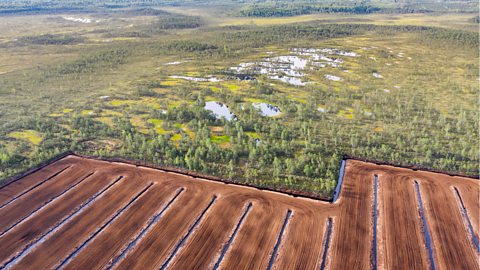
Activities
Quiz: Wetlands
Order it: Bog formation
Bitesize Primary games. gameBitesize Primary games
Play fun and educational primary games in science, maths, English, history, geography, art, computing and modern languages.

More on Geography of the UK
Find out more by working through a topic
- count6 of 17
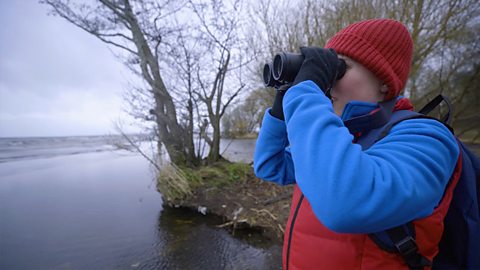
- count7 of 17
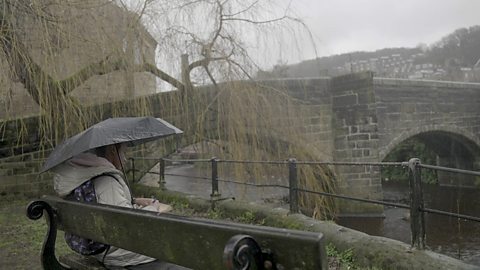
- count8 of 17

- count9 of 17

